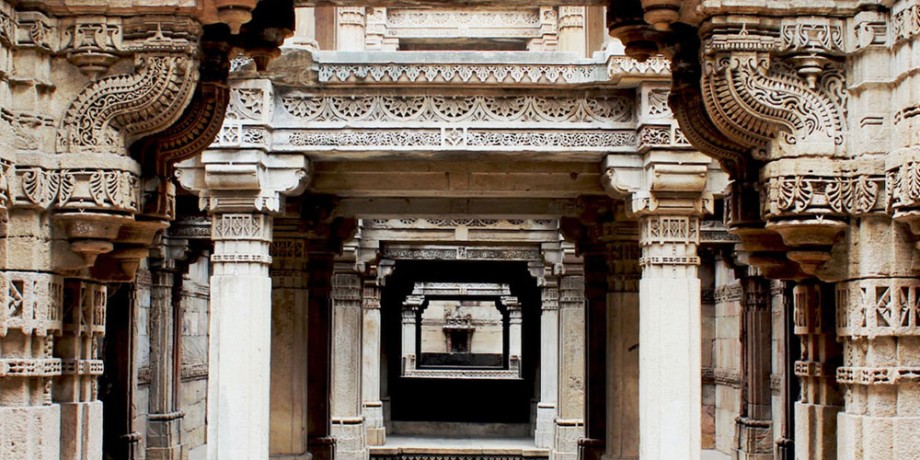
India is a land of rich heritage and culture, and nowhere is this more evident than in its temple architecture. From the grandeur of the South Indian Dravidian temples to the intricate carvings of the North Indian Nagara temples, the architecture of Indian temples is a true reflection of the country's history and spiritual beliefs.
One of the most striking features of Indian temple architecture is the use of intricate carvings and sculptures. Temples such as the Khajuraho Group of Monuments in Madhya Pradesh, and the Konark Sun Temple in Odisha, are renowned for their erotic sculptures, which are believed to symbolize the union of the individual soul with the universal soul. These temples are a testament to the skills of ancient Indian sculptors and the rich cultural heritage of the country. The temples of Khajuraho are particularly famous for their erotic sculptures, which are a unique feature of Indian temple architecture. These sculptures, which depict scenes of lovemaking and other erotic acts, are believed to be symbolic of the union of the individual soul with the universal soul. They are also believed to be a representation of the ultimate goal of human life, which is to attain union with the divine.
Other temples, such as the Meenakshi Temple in Tamil Nadu and the Virupaksha Temple in Karnataka, are famous for their intricate stone carvings and sculptures depicting scenes from Hindu mythology. These temples are adorned with a variety of sculptures and carvings, depicting gods, goddesses, and other divine beings, as well as scenes from Hindu mythology. The Meenakshi Temple, for example, is famous for its thousands of sculptures of gods and goddesses, including the temple's primary deity, Meenakshi, and her consort, Sundareshwar. The Virupaksha Temple is known for its intricate carvings of scenes from the Ramayana and the Mahabharata, as well as its beautiful frescoes and paintings.
Another notable feature of Indian temple architecture is the use of towering Gopuram, or gate towers, which can be seen in South Indian temples. These towering structures are covered in intricate carvings and sculptures, and are meant to symbolize the gateway to the temple and the path to enlightenment. The Sri Ranganathaswamy Temple in Tamil Nadu and the Vittala Temple in Karnataka are well-known for their grand Gopurams. The gopuram is a monumental tower, usually ornate, at the entrance of a temple, the gopuram serves as the temple's main gateway. They are typically adorned with intricate carvings and sculptures, and are often painted in bright colors. They are a striking feature of South Indian temple architecture and are a testament to the skills of ancient Indian architects and builders.
Indian temple architecture is not just a representation of religious beliefs, but also an expression of the country's rich culture, history, and art. Each temple has its own unique architectural style, which reflects the cultural and historical context in which it was built. Whether you're interested in the erotic sculptures of Khajuraho or the grand Gopurams of South India, there's something for everyone to explore and appreciate in the temple architecture of India. From the grand South Indian Dravidian temples to the intricate carvings of the North Indian Nagara temples, the architecture of Indian temples is a true reflection of the country's history and spiritual beliefs. It is a living testimony of the rich cultural heritage of the country and a window to the past, showcasing the talents of ancient Indian sculptors and architects. Next time when you plan to visit India, make sure to include a visit to one of these temples to experience the rich heritage and culture of the country in a unique way.
In conclusion, Indian temple architecture is a true reflection of the country's rich heritage and culture. From the grandeur of the South Indian Dravidian temples to the intricate carvings of the North Indian Nagara temples, each temple has its own unique architectural style and history. Whether you're interested in the erotic sculptures of Khajuraho or the grand Gopurams of South India, there's something for everyone to explore and appreciate in the temple architecture of India. It's not just a representation of religious beliefs, but also an expression of the country's rich culture, history, and art. It is a living testimony of the rich cultural heritage of the country and a window to the past, showcasing the talents of ancient Indian sculptors and architects. A visit to these temples is not only an opportunity to marvel at the architectural wonder but also to understand the cultural and historical context in which it was built. And so, next time when you plan to visit India, make sure to include a visit to one of these temples in your itinerary to experience the rich heritage and culture of the country in a unique way.



Leave a Comment